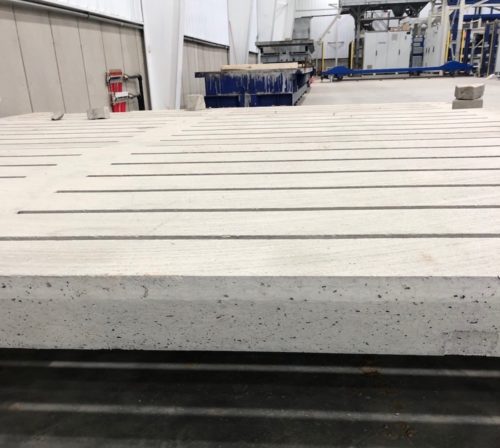
Agricultural concrete must be durable because farm animals generate wastes that are acidic and contain sulfates, chlorides, and other salts. Between the animal wastes and the cleaning that keeps the barn livable, the environment stays wet. These conditions present a challenge to concrete durability that require high-performance concrete.
Agricultural concrete items such as hog slats traditionally contained ASTM C150 portland cement with a low water-cement ratio. This results in high-strength concrete with a great deal of calcium hydroxide and calcium aluminates. This chemistry is problematic because it leaves the concrete vulnerable to acid- and sulfate attack. Calcium hydroxide is soluble in water and acids, and calcium aluminates react with sulfates to form expansive salts. For this reason, it is common to find agricultural concrete exhibiting exposed aggregate and loss of section.
Modern method for mixture proportioning
MDI has reformulated the concrete to resist acid- and sulfate attack and the ingress of water. This concrete has performed successfully in bridges, dams and wastewater treatment plants, all applications where durability is key.
To achieve the performance it needs from agricultural concrete, MDI has partnered with Beton Consulting Engineers.
Both the mixture proportions and the manufacturing process give MDI’s hog slats superior durability. Instead of the traditional flow-based method, Beton uses a modern mixture proportioning method that focuses on minimizing voids.
Instead of an all-portland cement concrete, Beton selected a combination of slag cement and portland cement. Because the cementitious materials are slow to react, MDI uses steam curing to speed things up.
High-performance concrete is concrete with properties not readily achieved with routine materials and processes. For the barn owner, it means agricultural concrete with a long life.
